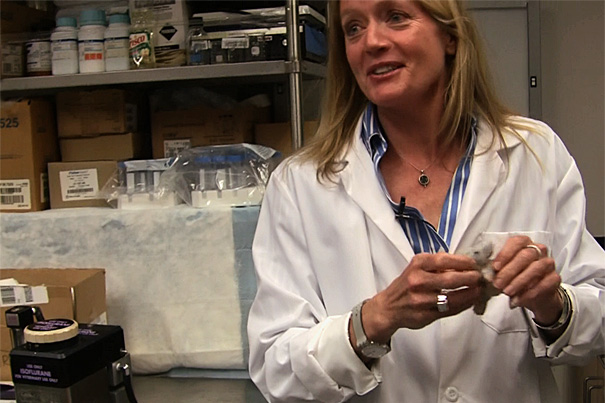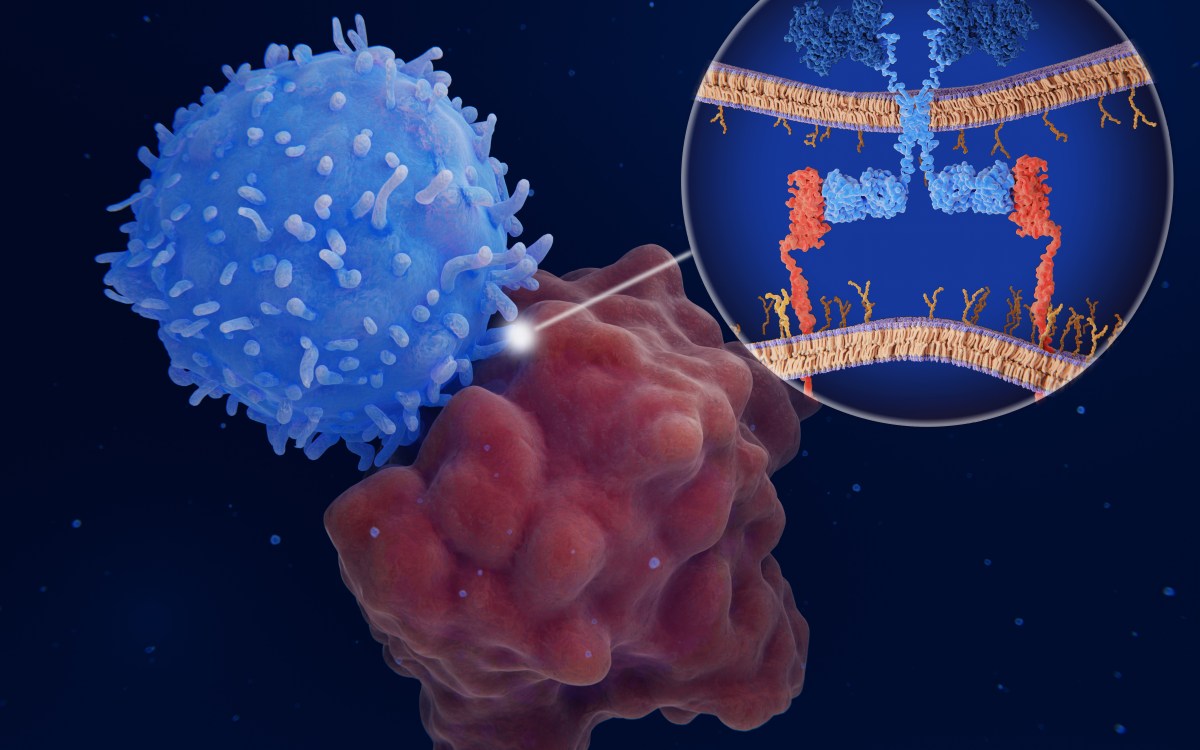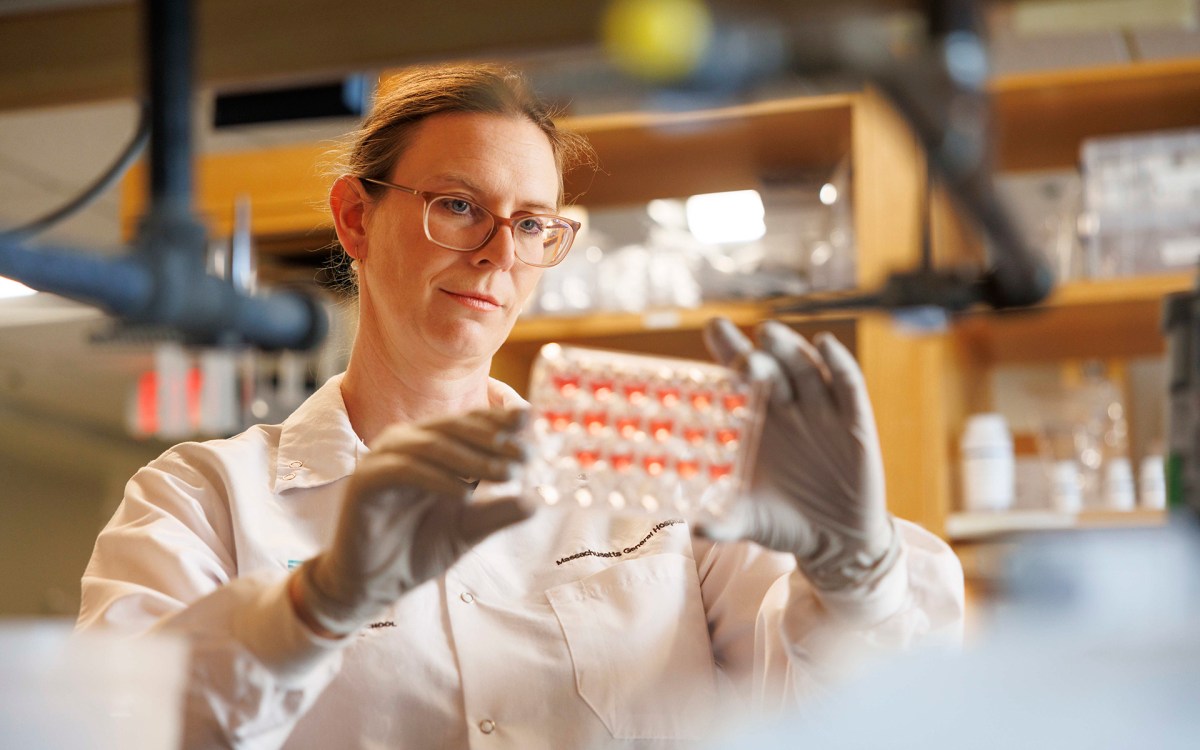
A novel therapy to increase bone mass will be launching with the space shuttle Atlantis on July 8. “On Earth, our bones experience mechanical forces from being pushed and pulled by muscles that work against gravity to keep us upright and moving around, as well as from the impact of our body weight against the ground,” said Mary Bouxsein of BIDMC and Harvard Medical School, adding that the rate of bone loss among astronauts is about 10 times greater than that seen in postmenopausal women.
Photo by Kelly Lawman/BIDMC
Bone loss study takes flight
Shuttle experiment tests therapy to build bone during space travel
Astronauts lose a significant amount of bone mass during space travel and with long-duration flights there is concern that this bone loss could lead to an increased risk of fractures. When the final mission of NASA’s 30-year Space Shuttle program is launched on Friday (July 8), an animal experiment to test a novel therapy to increase bone mass will be on board.
Led by a consortium of scientists from Harvard-affiliated Beth Israel Deaconess Medical Center (BIDMC), Amgen Inc., UCB, BioServe Space Technologies, and the University of North Carolina, and funded by NASA’s Ames Research Center, the research will not only address a serious problem that affects astronauts who spend weeks and months in a low-gravity environment, but may also yield novel insights into the prevention and treatment of skeletal fragility among patients on Earth who are less active due to aging or illness.
“Mechanical loading is required to maintain musculoskeletal health,” explained co-principal investigator Mary Bouxsein, a scientist in BIDMC’s Center for Advanced Orthopaedic Studies and assistant professor of orthopedic surgery at Harvard Medical School.
“On Earth, our bones experience mechanical forces from being pushed and pulled by muscles that work against gravity to keep us upright and moving around, as well as from the impact of our body weight against the ground,” she said. “These forces are much lower in microgravity environments and, as a result, the rate of bone loss among astronauts is about 10 times greater than that seen in postmenopausal women. So, while this research is designed to better understand and prevent skeletal fragility among astronauts, it may also tell us a great deal about the future potential of this novel therapy to improve bone strength here on Earth, in both older persons and in individuals with reduced physical activity due to various clinical conditions, such as stroke, spinal cord injury, or cerebral palsy.”
NASA’s Commercial Biomedical Test Module (CBTM-3) experiment will examine whether the use of an antibody that blocks the action of the protein sclerostin can lead to gains in bone mass and thereby prevent skeletal deterioration. (The sclerostin molecule is a potent inhibitor of bone formation that is produced by osteocytes, bone cells that form a “nervelike” network that enable the skeleton to “feel” and respond to mechanical strain.)
“This proof-of-principle study will enhance our understanding of the science behind the sclerostin antibody and arm us with important research to support potential future therapeutic applications in both astronauts and patients suffering from bone loss,” said Amgen Scientific Executive Director Chris Paszty.
Thirty mice will be flown in space, with half of the animals given a preflight injection of the sclerostin antibody and the remaining mice receiving a placebo. After the flight lands (following 12 days in space), various aspects of the structure, composition, strength, and cell and molecular nature of the bones from the flight and ground-based control mice will be analyzed.
“When the mice come back from space, we hope to learn what the effects of microgravity are on the skeleton and on the muscle,” explained Bouxsein. “We also want to find out if this new type of therapy will be able to counteract those profound effects and actually promote bone gain in a microgravity environment.
“One in two women and one in five men over age 50 will suffer a fracture resulting from osteoporosis [and bone loss] during their remaining lifetime,” she added. “These fractures have profound personal and societal consequences. With the increasing age of the population there is urgent need to develop bone-building therapies to prevent this type of potentially debilitating injury.”





